If your facility has a low-slope or flat roof and you want a waterproof system that also insulates, spray foam roofing is a strong candidate. RoofPRO installs SPF across Maryland for warehouses, schools, retail centers, churches, multifamily, and light industrial buildings. This guide explains what SPF is, how it performs in our climate, how costs work, and what to expect from a RoofPRO installation.
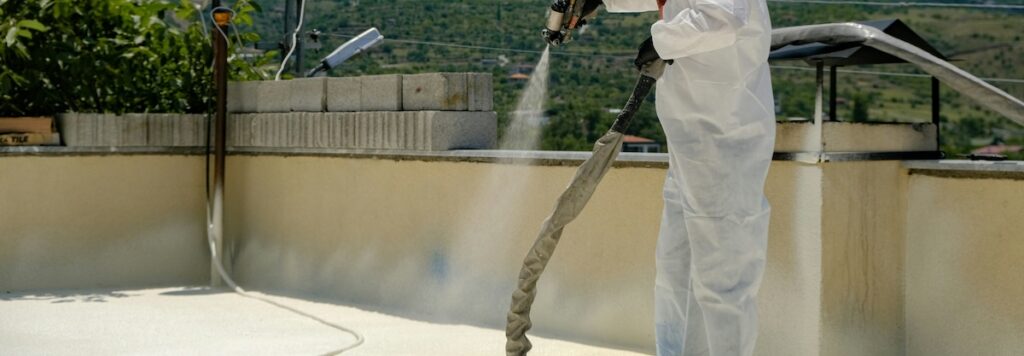
What is Spray Foam Roofing?
Spray foam roofing, often called SPF roofing, is a roofing system created by spraying a liquid polyurethane foam that expands and solidifies into a seamless layer. That layer adheres directly to the existing roof surface. Once cured, the foam is coated with a protective elastomeric coating, which shields it from UV rays, weather, and foot traffic.
Unlike traditional roofing systems that rely on seams, fasteners, or overlapping materials, spray foam roofing creates a seamless surface. That means no weak spots where water can sneak in. The foam itself also acts as insulation, giving your roof both strength and energy performance.
This type of roof is especially effective for flat and low-slope properties, which often deal with drainage issues and higher maintenance costs.
Is SPF Right for Your Roof?
SPF performs best on low-slope buildings with consistent access and enough clear roof time to complete coating work. It pairs well with:
- Metal roofs with aging fasteners and minor corrosion.
- Built-up and modified bitumen roofs with surface wear but sound insulation and decking.
- Concrete decks that need continuous waterproofing and insulation in one layer.
- Facilities that value energy savings and limited tear-off.
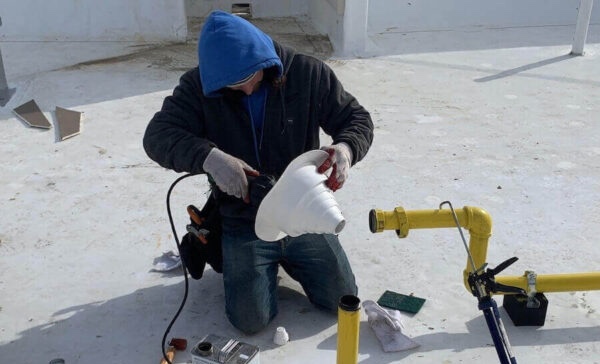
Benefits of Spray Foam Roofing
Energy Efficiency and Insulation
Property owners who have switched to spray foam roofing often notice measurable changes in monthly utility costs. For businesses with large facilities, those savings add up quickly. Spray foam has one of the highest R-values of any roofing material, typically around R-6.5 per inch. That means it resists heat transfer much better than most flat roofing systems. In a Maryland summer, where hot and humid days are common, that extra insulation helps reduce cooling demands. In the winter, it slows heat loss, keeping your building more stable and lowering energy bills.
Waterproofing and Leak Prevention
Flat roofs are notorious for water ponding, which leads to leaks. Spray foam’s seamless coverage makes it highly resistant to water intrusion. The foam expands during installation to fill gaps, cracks, and problem areas. After application, the elastomeric roof coating adds another protective layer. The result is a roof surface with far fewer opportunities for leaks. When properly maintained, a spray foam roof can withstand even the heaviest Maryland rainstorms without breaking down.
Durability and Longevity
Many property owners choose spray foam because it reduces the frequency of costly replacements. When maintained with periodic recoating, a spray foam roof can last more than 20 years. The closed-cell structure of the foam prevents water from spreading if the surface is punctured. It also holds up well against high winds.
Cost Savings Over Time
The initial investment for spray foam roofing can be higher than some alternatives. However, the system pays for itself through lower energy costs, reduced repair needs, and extended service life. Businesses often find that over a 20-year span, spray foam outperforms traditional flat roofing systems financially.
Spray Foam Roofing vs. Traditional Roofing Systems
Spray foam roofing offers a unique mix: it’s lightweight, seamless, highly insulated, and cost-effective long term. It requires specialized installation, which is why working with a contractor like RoofPRO matters.
Maryland property owners often ask how spray foam stacks up against common systems like TPO, EPDM, or built-up roofing.
- EPDM (rubber roofing) is affordable and common but requires seams and adhesives that wear down over time.
- TPO offers energy efficiency but is less forgiving with ponding water.
- Built-up roofing is strong but heavy and labor-intensive to install.
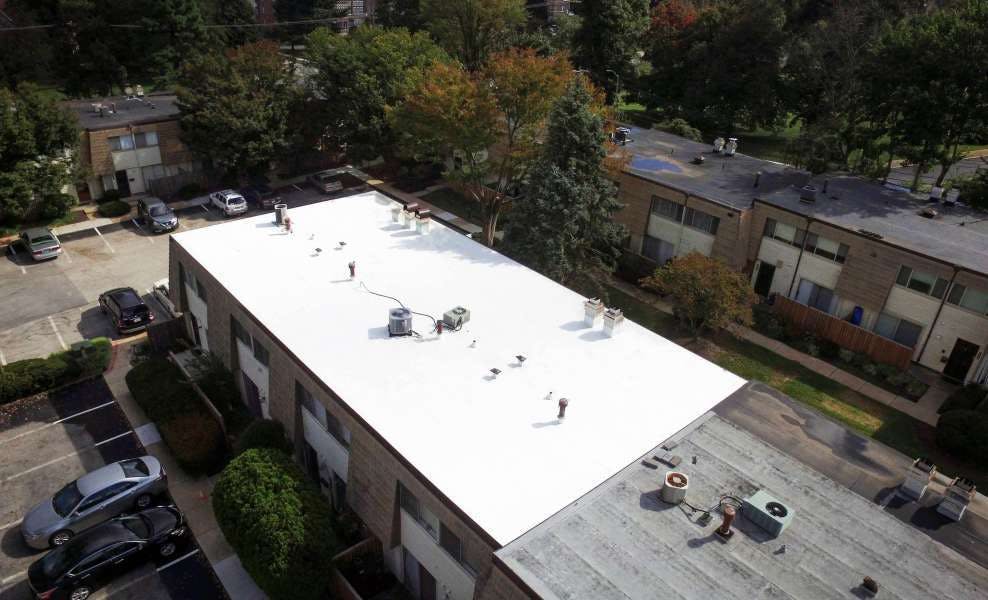
How RoofPRO Installs SPF Roofing
A good result depends on a disciplined process. Here is how we approach SPF projects across the state.
- Inspection and moisture survey – We walk the roof, mark deficiencies, and locate wet areas with infrared scanning.
- Scope and specification – We write a project-specific spec that sets foam thickness, coating type, granule use, and warranty term. We coordinate with the manufacturer for third-party inspections when required.
- Prep and repairs – This step includes pressure washing, rust treatment on metal, replacement of wet insulation, and deck fixes. We prime as needed so foam bonds to the substrate.
- Foam application – Crews apply lifts to reach the target R-value and design slope. We control spray patterns, monitor ambient conditions, and keep a log of density checks and thickness readings.
- Coating and granules – We apply the correct topcoat chemistry for the site. Silicone is common for ponding resistance. Acrylic can work where positive drainage exists. Polyurethane coatings are used in select cases that need high abrasion resistance. Granules are broadcast in the final coat where traffic or extra durability is needed.
- Quality assurance – Technicians record wet mil readings, adhesion pull tests when required, and detail photos. We correct small defects on the spot. Punch lists are resolved before closeout.
- Turnover and maintenance plan – The final package includes warranty documents, a roof plan, and a maintenance schedule. We enroll you in RoofPRO’s inspection program and set your next recoat window.
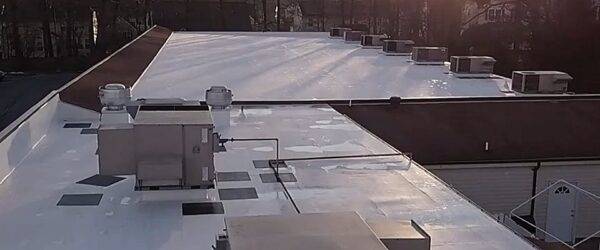
Maintenance and Repairs for Spray Foam Roofs
Spray foam roofing requires periodic maintenance to maximize performance.
- Annual Inspections: Small punctures, coating wear, or debris buildup should be checked and addressed promptly.
- Recoating Intervals: Protective coatings typically need reapplication every 7-10 years.
- Flat Roof Repairs: If damage occurs, spray foam can often be patched without replacing large sections of the roof.
RoofPRO offers maintenance services across Maryland to help property owners keep their investment performing year after year.
Maintenance, Recoating, and Warranties
SPF lasts when it is inspected and maintained. Plan on annual inspections and an extra visit after severe storms. We look for coating wear, punctures, sealant condition at terminations, and debris around drains. Cleaning and small repairs are straightforward with compatible materials.
Recoating intervals depend on coating type, thickness, traffic, and exposure. As a general guide, many systems call for a recoat in 7 to 10 years. The recoat adds new protective layers, renews reflectivity, and resets the warranty when done within the recommended window. RoofPRO offers maintenance plans that keep you on schedule so you do not miss the ideal timing.
Common Applications for Spray Foam Roofing
Commercial Roofing in Maryland
Warehouses, retail stores, and office complexes with flat or low-slope roofs benefit most from spray foam. The system’s energy performance and durability help keep operating costs lower. In cities like Baltimore or Annapolis, where large commercial buildings dominate, spray foam has become a strong contender.
Industrial Facilities
Factories and industrial properties need roofing systems that can stand up to chemicals, heavy traffic, and constant stress. Spray foam roofing provides a tough yet flexible barrier that performs well in these environments.
Residential Flat Roofs
Flat and low-slope residential homes often face the same issues as commercial buildings: leaks, drainage challenges, and higher energy bills. Maryland homeowners in areas like Silver Spring and Bethesda have chosen spray foam to strengthen and insulate their roofs.
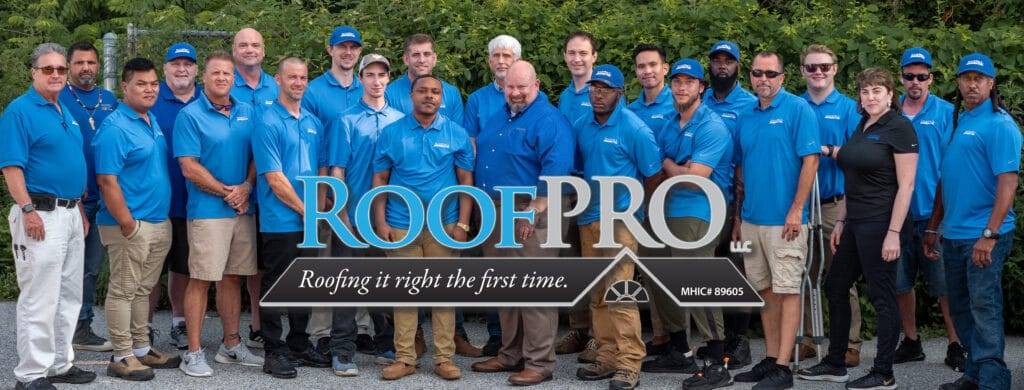
Why Choose RoofPRO for Spray Foam Roofing in Maryland?
We’re a fully licensed Maryland roofing contractor with decades of commercial roofing experience. We understand local building codes, regional weather patterns, and what it takes to keep flat roofs watertight through every season. Our crews receive specialized training in SPF materials and application methods. This includes:
- Safe use of high-pressure proportioning equipment
- Proper foam thickness and curing standards
- Surface preparation and coating techniques
We don’t subcontract SPF work to general crews. Our team handles everything in-house. Every project starts with a detailed inspection and written estimate. You’ll know what’s involved, how long it will take, and how much it will cost—before we begin. We also stand behind our work with system warranties and ongoing maintenance options.
Frequently Asked Questions
With maintenance and timely recoats, many SPF systems perform for decades. Service life connects directly to coating condition and inspection frequency.
Often yes. We confirm substrate condition, remove wet insulation, repair damage, and prime as needed. If the existing system has structural issues, we address those first.
We set up overspray screens, plan wind-aware work windows, and coordinate with your team on intakes and sensitive areas. Odors are temporary and managed through scheduling and ventilation.
Closed-cell foam provides strong R-value per inch and a reflective surface with the right topcoat. Many owners see lower heating and cooling loads after installation.
Semiannual inspections, cleaning, small repairs, and recoating at the scheduled interval. We provide a plan and handle the reminders.
How to Get a RoofPRO SPF Proposal
A good proposal starts with data. Share your roof size, known leak areas, recent utility bills, and any site restrictions. We will schedule an inspection, document moisture and substrate conditions, and create a detailed scope with foam thickness, coating chemistry, warranty term, project schedule, and a maintenance plan. You will see the full cost plus a path for renewals so you can compare to replacement. Contact Us To Get Started

